Electronics News
Archive : 12 June 2016 год
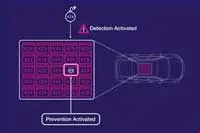 Karamba Security has released Carwall, in-car security software that automatically secures connected cars against cyberattacks. Carwall software keeps connected cars safe by sealing the car’s controller software, so it can immediately detect and prevent cyberattacks from exploiting the car controller’s software security vulnerabilities.
Karamba Security has released Carwall, in-car security software that automatically secures connected cars against cyberattacks. Carwall software keeps connected cars safe by sealing the car’s controller software, so it can immediately detect and prevent cyberattacks from exploiting the car controller’s software security vulnerabilities.
In the US in March, after white hat hackers repeatedly demonstrated they could successfully exploit security bugs in a connected car’s code to infiltrate its safety systems, the Federal Bureau of Investigation (FBI), Department of Transportation, and the National Highway Traffic Safety Administration issued a Public Safety Alert that highlighted the dangers to new and existing cars on the road.
"As vehicle control systems become increasingly automated with everything controlled by software, the probability of code flaws that can be exploited by bad actors for nefarious purposes increases dramatically," said Sam Abuelsamid, senior analyst, Navigant Research. "Compound this with the growing ubiquity of connected systems including cellular telematics, V2X communications and connected smartphones, and the need to integrate cybersecurity protection systems at multiple levels becomes clear.”
Karamba’s software seals the car’s electronic control units (ECUs) by automatically creating security policies, based on factory settings. In real time, Carwall detects and prevents anything not explicitly allowed to load or run on the ECU, including in-memory attacks.
“Carwall enables car manufacturers to immediately address security bugs in existing or new code and eliminate an attacker’s way into a connected car,” explained Ami Dotan, CEO of Karamba Security. “We give car manufacturers and Tier 1 system developers the tools to detect and seal their code against exploits and detect and stop attackers before they can ever get started.”
Carwall software requires zero developer resources – it is embedded during the ECU’s software build process, so it becomes part of the regular development cycle. As a result, Carwall can be secured and retrofitted to automobiles already on the road as part of software updates completed during a regularly scheduled service visit.
Author
Tom Austin-Morgan
Source: www.newelectronics.co.uk
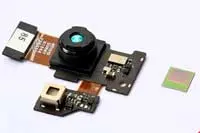 The REAL3 camera sensor chip developed by Infineon at its Graz competence centre for advanced semiconductor solutions is featured in the PHAB2 Pro smartphone from Lenovo.
The REAL3 camera sensor chip developed by Infineon at its Graz competence centre for advanced semiconductor solutions is featured in the PHAB2 Pro smartphone from Lenovo.
Combining analogue and digital signal processing with high data rates, the device integrates the pixel array, control circuitry, A/D converters and the digital high-speed interface on one chip. The development was made in co-operation with Time of Flight (ToF) specialist pmdtechnologies.
According to Lenovo, it is the first manufacturer to bring Google’s Tango technology to a consumer product. Tango allows devices to understand spatial information using the ToF principle and Infineon says it is the only supplier of image sensors that meet Google’s specifications.
“3D machine vision will drive multiple new applications both in the consumer and the automotive world,” said Jochen Hanebeck, president of Infineon’s automotive division. “The depth perception and motion tracking today implemented in Tango devices can also be applied to driver monitoring or gesture detection inside the car.”
The measuring principle involves infrared light. For each pixels, the 3D image sensor measures the time the light takes to travel from the camera to the object and back again, with each pixel detecting the brightness value of the objects. ToF technology from pmdtechnologies is said to offer the best spatial resolution and high robustness, with low current consumption and size.
Author
Graham Pitcher
Source: www.newelectronics.co.uk
 A series of 24bit simultaneous sampling sigma-delta A/D converters from Analog Devices is targeted at use in wide bandwidth, high density instrumentation, energy and healthcare equipment.
A series of 24bit simultaneous sampling sigma-delta A/D converters from Analog Devices is targeted at use in wide bandwidth, high density instrumentation, energy and healthcare equipment.
The AD7768 series includes a power scalable modulator and a digital filter on each channel to enable synchronised measurement of AC and DC signals in instrumentation applications, including modular data acquisition, audio test, and asset condition monitoring.
Offering high throughput, fast settling response and simultaneous sampling, the AD7768 series is said to enable faster test times, a reduction in testing costs and more efficient instrumentation design.
Meanwhile, high channel count enables healthcare devices, such as clinical vital signs monitoring equipment, to maintain low power and high input bandwidth.
According to the company, the converters deliver improved power quality monitoring through the ability to detect harmonic distortion over a wider bandwidth for detection and diagnosis of grid imbalance. A scalable layout also allows system designers to make further time and cost savings through the use of a single converter series across multiple platforms.
Two devices are available: the eight channel AD7768 and the four channel AD7768-4. Both are said to have a 6dB dynamic range advantage over competing products and to deliver what Analog Devices claims as the industry’s best integral non linearity performance over the widest available bandwidth. Other benefits include 10 times better offset, a 30 times reduction in gain error and a factor of two improvement in gain drift.
Author
Graham Pitcher
Source: www.newelectronics.co.uk
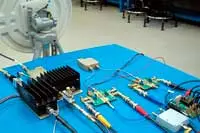 Today’s ‘half duplex’ radios send signals and receive signals, but can only perform one of these functions at a time. Full duplex radios have the potential to double spectral efficiency, but would also generate double the amount of interference.
Today’s ‘half duplex’ radios send signals and receive signals, but can only perform one of these functions at a time. Full duplex radios have the potential to double spectral efficiency, but would also generate double the amount of interference.
Looking to address the problem, researchers from New York University (NYU) and Trinity College in Dublin, Ireland have conceived a method to improve spectrum efficiency by deploying a mix of half and full duplex radios in basestations.
According to Professor Shivendra Panwar from NYU’s Tandon School of Engineering, the use of full duplex in a cellular network is like being at a crowded party where everyone is attempting to talk and listen at the same time. “Even if you were capable of speaking and listening at the same time, everyone around you would be doing the same thing,” he said. “It would be impossible to tune out that extra noise – and the same is true in a full duplex system. There are many more outages and dropped calls due to the high level of interference.”
Noting the advantages of each system – full duplex radios offer superior efficiency, while half duplex radios provide a wider coverage area – the team hypothesised that mixing full and half duplex cells could allow wireless providers to customise networks to meet demand and improve spectral efficiency as needed without excess interference.
The team generated mathematical models of base stations with varying configurations of half and full duplex, then ran simulations to predict the trade offs in efficiency and coverage areas. To their knowledge, this is the first study to investigate the impact of mixed cell basestations on spectral efficiency and outages. The models are also said to be readily applicable for wireless engineers seeking to improve their networks.
“The beauty of this system is that it’s tuneable and would allow providers to adjust the mix of cells based on the needs of a region,” said researcher Sanjay Goyal. “If you're designing an urban network, the demand for bandwidth is much greater than the need for wide area coverage. More full duplex cells would provide that bandwidth, even at the cost of a few more dropped calls.” The reverse is said to hold in less dense areas, where spectral efficiency is less crucial.
Because download traffic far exceeds upload traffic on most networks, the team showed that a mixed cell system could enable faster downloads at the expense of upload speed, which is less likely to be noticed by customers.
Author
Graham Pitcher
Source: www.newelectronics.co.uk
 Qualcomm Technologies has unveiled the Qualcomm Connected Car Reference Platform, designed to enable automakers and their suppliers to explore, prototype and commercialise connectivity designs using modules and solutions featuring on its roadmap.
Qualcomm Technologies has unveiled the Qualcomm Connected Car Reference Platform, designed to enable automakers and their suppliers to explore, prototype and commercialise connectivity designs using modules and solutions featuring on its roadmap.
The platform features a range of Qualcomm technology, including Snapdragon X12 and X5 LTE modems, quad constellation Global Navigation Satellite System and 2D/3D dead reckoning location solutions, VIVE Wi-Fi technology and dedicated short range communications for V2X. The platform also features in-vehicle networking technologies, including Gigabit Ethernet with A2B and CAN interfaces.
“With the Connected Car Reference Platform, Qualcomm Technologies has developed a platform for automakers, module OEM customers and developers that emphasises scalability, modularity and security for integrating and managing multiple cutting-edge wireless technologies inside vehicles,” said Nakul Duggal, vice president, product management.
A common framework allows designs to scale from a basic telematics control unit up to an integrated wireless gateway connecting multiple ECUs within the car. The platform also provides a degree of future proofing, allowing connectivity hardware and software to be upgraded, while also handling issues such as wireless coexistence and third party applications support.
Author
Graham Pitcher
Source: www.newelectronics.co.uk
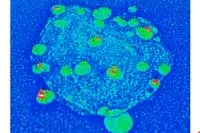 A quick and inexpensive way to build diamond based hybrid nanoparticles has been announced by a team from the University of Maryland, which claims the method overcomes many of the problems associated with current approaches. The team also suggests it has discovered evidence that a nitrogen vacancy could behave as a qubit at room temperature.
A quick and inexpensive way to build diamond based hybrid nanoparticles has been announced by a team from the University of Maryland, which claims the method overcomes many of the problems associated with current approaches. The team also suggests it has discovered evidence that a nitrogen vacancy could behave as a qubit at room temperature.
The process is based on nanoscale diamonds containing a nitrogen atom where a carbon atom should be, with an empty space next to it due to another missing carbon atom. This ‘nitrogen vacancy’ impurity is said to impart special optical and electromagnetic properties.
By attaching other materials to the diamond grains, the researchers say that hybrid nanoparticles can be created, including nanoscale semiconductors and magnets with precisely tailored properties.
“If you pair one of these diamonds with silver or gold nanoparticles, the metal can enhance the nanodiamond’s optical properties,” said researcher Min Ouyang. “If you couple the nanodiamond to a semiconducting quantum dot, the hybrid particle can transfer energy more efficiently.”
“A major strength of our technique is that it is broadly useful and can be applied to a variety of diamond types and paired with a variety of other nanomaterials,” Ouyang explained. “It can also be scaled fairly easily. We are interested in studying the basic physics further, but also moving toward specific applications. The potential for room temperature quantum entanglement is particularly exciting and important.”
Author
Graham Pitcher
Source: www.newelectronics.co.uk
 Symantec has released Symantec Anomaly Detection for Automotive to protect against zero day attacks and never-before-seen issues facing modern connected vehicles.
Symantec has released Symantec Anomaly Detection for Automotive to protect against zero day attacks and never-before-seen issues facing modern connected vehicles.
According to Gartner, there will be 220million connected cars on the road in 2020. While new technologies promise to enhance the driving experience, these advancements also create avenues of attack for hackers that can endanger drivers and passengers. Some of these vulnerabilities will not be known by the vendor, a hole in the software is known as a zero day vulnerability and can be exploited by hackers in what is known as a zero day attack.
Symantec Anomaly Detection for Automotive uses machine learning to provide passive in-vehicle security analytics that monitor all Controller Area Network (CAN) bus traffic without disrupting vehicle operations, learn what normal behaviour is and flag anomalous activity that may indicate an attack. Symantec claims the solution works with virtually any automotive make and model.
Christian Christiansen, IDC VP of Security Products, said: “As connected automobiles become the norm, security issues have already drawn attention. Keeping security top of mind will not only help ensure the safety of drivers and passengers but also build trust in the car manufactures and the overall Internet of Things ecosystem.”
Symantec Anomaly Detection for Automotive is said to learn a vehicle’s behaviour, enabling automakers to see previously unseen attacks. It automatically prioritises incidents based on perceived criticality and risk as well as detecting anomalies without requiring manufacturers to set rules or create policies while using minimal memory and CPU power.
Author
Tom Austin-Morgan
Source: www.newelectronics.co.uk
 Results following two months’ of science operations show the two cubes at the heart of the LISA Pathfinder spacecraft are falling freely through space, influenced only by gravity and unperturbed by other external forces. And, says the European Space Agency (ESA), the precision is more than five times better than originally required.
Results following two months’ of science operations show the two cubes at the heart of the LISA Pathfinder spacecraft are falling freely through space, influenced only by gravity and unperturbed by other external forces. And, says the European Space Agency (ESA), the precision is more than five times better than originally required.
Detecting gravitational waves requires a sensing system operating at frequencies between 0.1mHz and 1Hz and the ability to measure tiny fluctuations in distance between objects placed millions of kilometres apart. LISA Pathfinder was designed to demonstrate key technologies needed to build such an observatory.
In the satellite, a pair of identical 2kg 46mm gold–platinum cubes 38cm apart are shielded from external influences, with the satellite adjusting its position constantly to avoid hitting them.
According to the team, the test masses are almost motionless with respect to each other, with a relative acceleration lower than 1 part in 10-14 of the Earth’s gravity.
“LISA Pathfinder’s test masses are now still with respect to each other to an astonishing degree,” said Alvaro Giménez, ESA’s director of science. “This is the level of control needed to enable the observation of low frequency gravitational waves with a future space observatory.”
LISA Pathfinder was launched on 3 December 2015, reaching its operational orbit roughly 1.5million km from Earth towards the Sun in late January 2016.
Mission operations started on 1 March 2016, with scientists performing a series of experiments to measure and control the different aspects and to determine how still the masses were. The first two months of data are said to show that, for frequencies between 60mHz and 1Hz, LISA Pathfinder’s precision is only limited by the sensing noise of the laser measurement system used to monitor the position and orientation of the cubes.
Author
Graham Pitcher
Source: www.newelectronics.co.uk
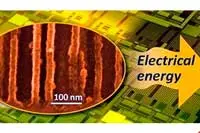 A micro supercapacitor developed by VTT Technical Research Centre can be integrated inside a chip. The device, said to have high energy and power density, is enabled by a hybrid nanomaterial developed recently at the facility.
A micro supercapacitor developed by VTT Technical Research Centre can be integrated inside a chip. The device, said to have high energy and power density, is enabled by a hybrid nanomaterial developed recently at the facility.
According to VTT, the technology could realise zero power autonomous devices required for the IoT. For the first time, it adds, silicon based micro-supercapacitors can compete with carbon and graphene based devices in terms of power, energy and durability.
The energy and power density of a supercapacitor depends on the surface area and conductivity of the solid electrodes. VTT’s research group has developed a hybrid nanomaterial electrode, which consists of porous silicon coated with a few nanometres of titanium nitride laid down by atomic layer deposition, creating a large conductive surface in a small volume.
VTT’s research group says it has taken integration to the extreme by including micro-supercapacitor energy storage in a chip. It says the device can store up to 0.2J and generate up to 2W when installed in a 1cm2 chip.
VTT is now looking for a partner to help commercialise the technique.
Author
Graham Pitcher
Source: www.newelectronics.co.uk

